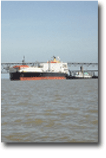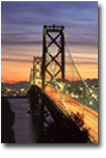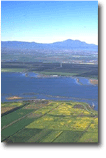| |
Concentrations
of potentially toxic elements in sediments are orders of magnitude
higher than concentrations of these elements in water. The
ecological influences of metals and metalloids in aquatic
sediments depend upon how available sediment-bound elements
are to aquatic organisms and the implications of that bioavailability
for effects of the elements. Development of realistic pollution
regulations, in turn, depend upon understanding all processes
influencing bioavailability and effects, in nature. This project
involves developing tools and understanding of the processes
determining metal and metalloid bioavailability. The project
employs experimental studies of processes affecting metal/metalloid
bioavailability, fate and effects. Long-term, intensive field
studies are also used to understand processes, trends and
effects of metals/metalloids in estuaries, tidal freshwater
ecosystems, lakes (primarily in the San Francisco Bay-Delta
and its watershed) and rivers (primarily the Clark Fork River
in Montana, USA) .
Objectives of this project over the years
have included: (1) study the partitioning of trace metals
among the components of sediments, processes that determine
the fate of contaminants within the sediment column (with
sediment cores); (2) study the influence of geochemical and
biogeochemical processes in sediments upon metal/metalloid
uptake and metal effects in organisms which contact sediments
directly; (3) study physiological characteristics of aquatic
organisms that determine metal/metalloid uptake and effects;
(4) improve methodology that makes use of biota and sediments
as indicators of bioavailability, and better experimental
ways of determining impacts of sediment bound metals/metalloids;
(5) understand the trophic transfer of metals and metalloids;
(6) develop protocols and models for predicting the bioavailability
of metals from diet and dissolved forms; (7) understand the
impacts of mine wastes in rivers and how estuarine processes
influence impacts; (8) develop methods for assessing the presence
of biological affects from toxic wastes in aquatic communities
in nature; (9) Develop ecosystem scale models useful for constructing
new ways of evaluating risk from metals/metalloids. |








